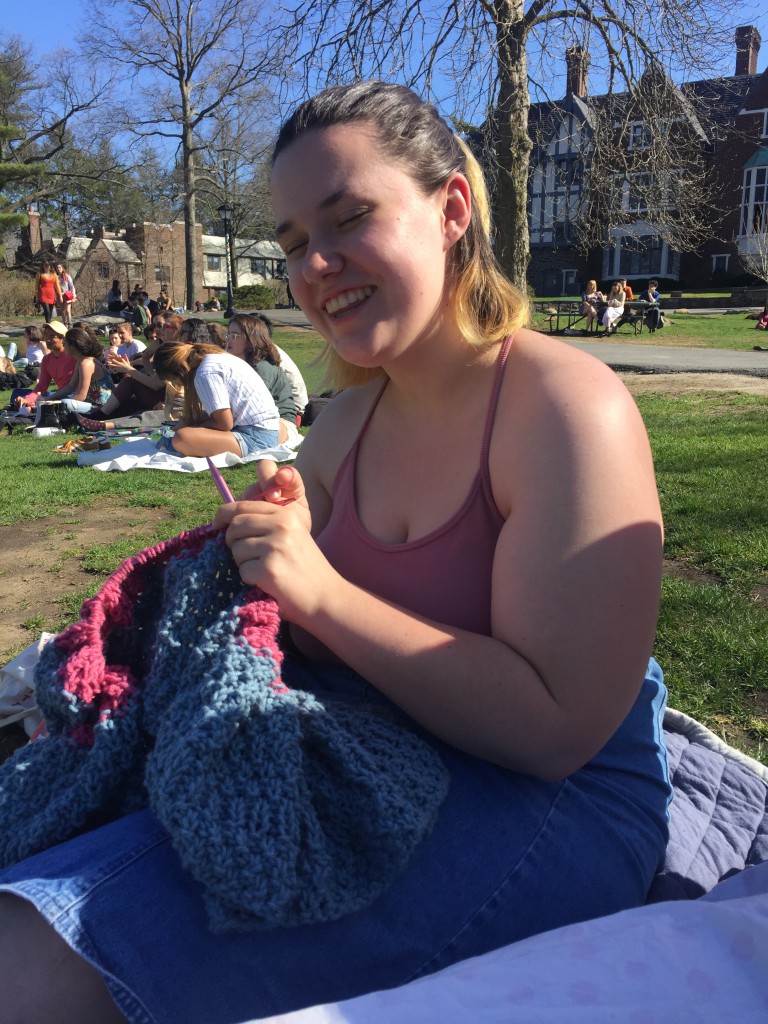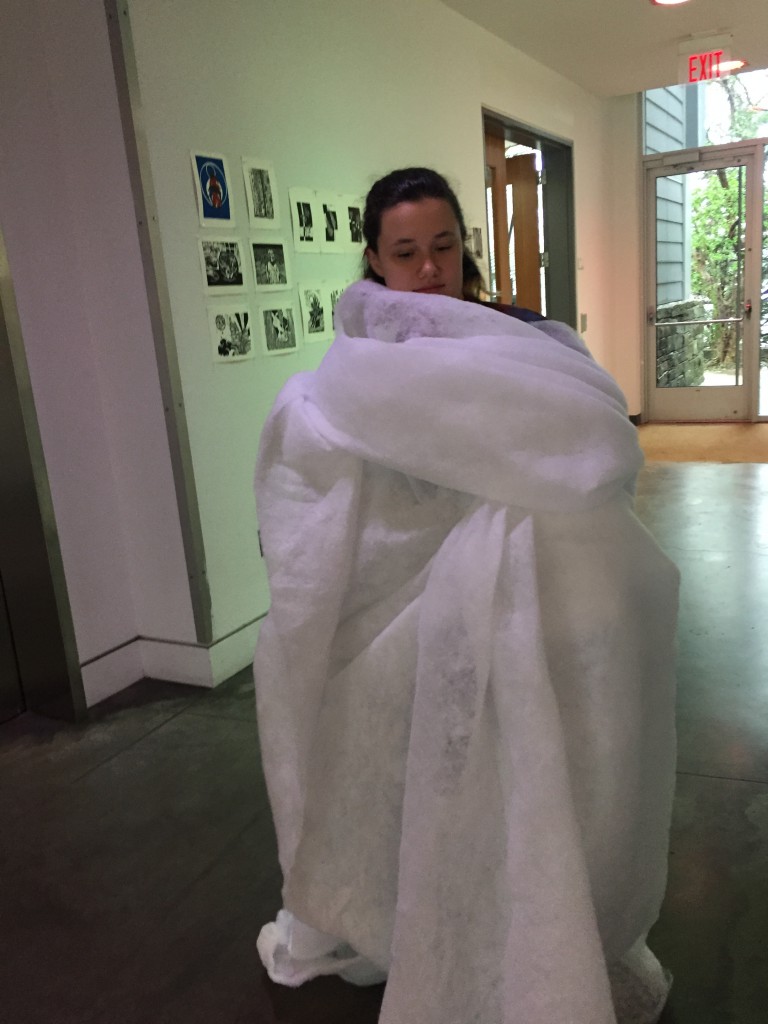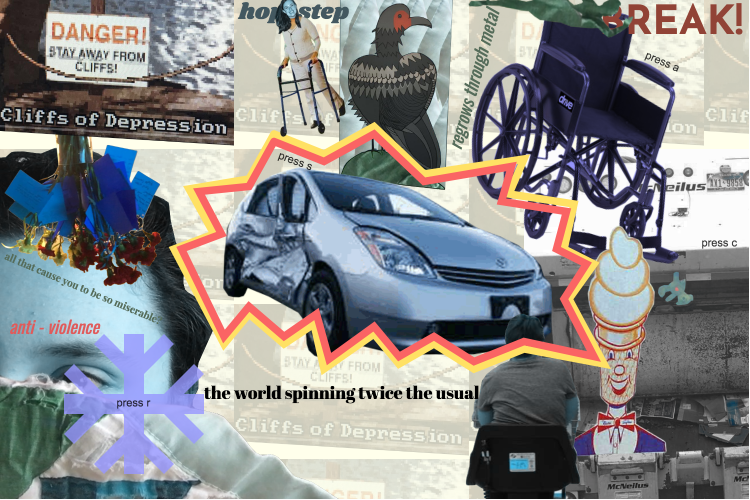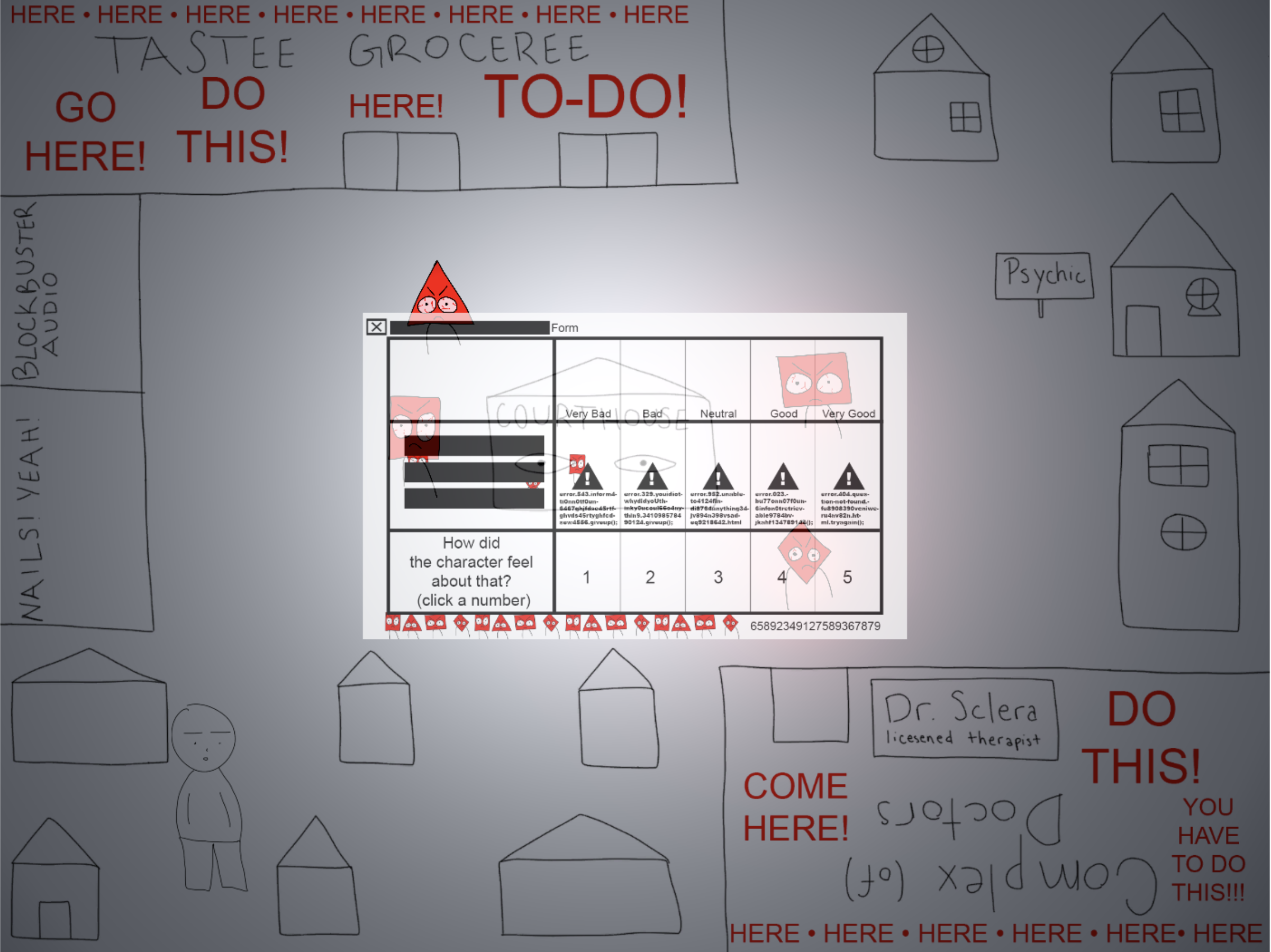

The original inspiration for this project was that our housemates often spend evenings knitting together, talking and watching television. We both love knitting, finding it to be relaxing and a nice activity to do with our hands as we socialize. Our original idea for this project was to create a full blanket that we would ask the participants to unravel and give us the pieces of yarn. We soon realized that this wasn’t realistic, so instead we changed the focus of our project to be one of collaboration. We often knit our own projects separately, but this installation was a team effort, so we wanted it to be fully collaborative. In order for it to be this way, we decided to each knit about half of the blanket. Then we would sew these halves together while still knitting the blanket, so we would knit from both ends. We still wanted people to interact with the blanket, so we decided we would gather materials that could be knitted with that were not yarn (ribbon, shoestring, twine, cut up tablecloth, string made of plastic — all in a variety of colors). People would then add these to the blanket by handing them to us to knit in, and we would teach the audience members (who we later dubbed community members) to knit as well.

After one of our first critiques on this project in class, we realized that if more than two other people were participating, they would get bored and wouldn’t feel engaged with the piece. We also wanted people to do something besides knitting, because we know that sometimes the idea of knitting can be intimidating. With this, we planned to encourage community members to braid or otherwise combine some of the non-traditional materials and either ask us to knit them into the blanket or tie them into the fabric we had already knit in any way they wanted.

During one of our final, aesthetic-focused critiques for this project, we decided that to frame it, we wanted to be sitting on a fake cloud to add to the comfortable, homey feeling. We got pillow stuffing and formed it into a circle to sit on, and we sat across from each other, wearing kind of cutesy outfits of shorteralls and pastel t-shirts. The blanket would go across the cloud, and we would knit it simultaneously.

Our experience of the installation was overwhelmingly positive. It was nice to be in the middle of Open Studios, where people were milling about and being contemplative, and changing that space to have it be one of direct and kind interaction. When we invited people to sit with us, one of the main points of pushback was that many said they could not knit. In these instances, we responded by saying that we could teach them, or they could do something else. This was one of those wonderful moments where what we had planned lined up with reality. Overall, we made new friends and completed a blanket that truly feels like it came from the community. If we had unlimited resources and could do the project again, we would have liked to perhaps have made a schedule for all of the community members to actually be able to use the blanket, or we would have done multiple sessions of sitting in Heimbold, asking people to participate in a similar way each time. Because at Open Studio there were so many people that were so excited, but we couldn’t physically and emotionally support all of them in making the blanket, the idea of multiple knitting sessions seems wonderful in retrospect, to have been able to forge a strong sense of community.


